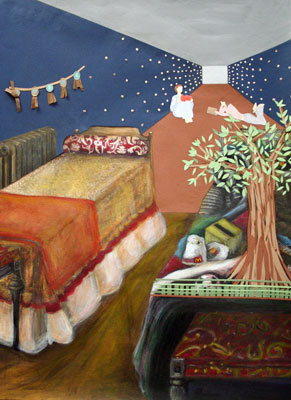All Nonfiction
- Bullying
- Books
- Academic
- Author Interviews
- Celebrity interviews
- College Articles
- College Essays
- Educator of the Year
- Heroes
- Interviews
- Memoir
- Personal Experience
- Sports
- Travel & Culture
All Opinions
- Bullying
- Current Events / Politics
- Discrimination
- Drugs / Alcohol / Smoking
- Entertainment / Celebrities
- Environment
- Love / Relationships
- Movies / Music / TV
- Pop Culture / Trends
- School / College
- Social Issues / Civics
- Spirituality / Religion
- Sports / Hobbies
All Hot Topics
- Bullying
- Community Service
- Environment
- Health
- Letters to the Editor
- Pride & Prejudice
- What Matters
- Back
Summer Guide
- Program Links
- Program Reviews
- Back
College Guide
- College Links
- College Reviews
- College Essays
- College Articles
- Back
Dorms in College… and Beyond MAG
Many high school students will be visiting colleges this year. If you’re among them, check out the dorms. Those rooms, with just enough space for a single bed and a desk, may be your future… your long-term future. Some students may be nervous about communal bathrooms and sharing a common room with strangers, while others may look forward to meeting new friends and creating a community. Either way, there is a sense that this group living will end at college graduation. Maybe not.
To help with the affordable housing issue, a new company in San Francisco, Starcity, is renovating old buildings and turning them into modern dorms. Living in San Francisco is even more expensive than living in Santa Monica. According to RentJungle.com, the average one-bedroom in San Francisco rents for $3,405/month; in Santa Monica it is $3,278/month. For about $2,000/month, Starcity residents get a furnished bedroom, a shared bathroom, and rights to common areas such as a living room, a kitchen, and outdoor spaces. The rent also includes utilities and Wi-Fi, just like college.
Something else these residences have in common with college dorms is social events. The residents do various activities together, such as have parties, go on outings and share meals. For a single professional, this living situation makes sense. It is a throwback to 19th-century boarding houses, where young singles could rent a bedroom and share common spaces.
These dorms can also reduce commuting as well as cut pollution and traffic, as residents would likely not own cars. The young professionals working in Santa Monica, likely dorm residents, embrace alternative transportation and support Santa Monica’s multi-modal goals to get people to walk, bike or use public transportation, in an effort to reduce the number of cars in the city.
As stated on smgov.net, the #1 element in Santa Monica’s Downtown Community Plan (DCP) is that “Housing is strongly encouraged to accommodate residents of all incomes, family situations, and stages of life.” In the DCP there are incentives to provide a percentage of affordable housing in new developments in downtown districts, but a greater percentage will be rented for the market rate. The dorm-style model actually may provide (more) affordable rents for more people.
Current residents are concerned about overdevelopment, as nearly half voted to limit new developments, but the DCP increases the building height limit create more housing units. Starcity is doing an admirable job of turning older, vacant buildings into dormitories with minimal disruption and development for the areas they serve. This model creates new housing units at a faster pace and more affordable rate without overdevelopment.
High school students are growing up with Uber, Airbnb, and bike share. We value sharing and efficiencies and would appreciate the dorm-style living. So take a closer look at the dorms when visiting colleges and imagine them a little newer, a little nicer – they may be your future. They say college is the best time of your life – hanging out with friends and creating a community with like-mined people – so why not just extend it?

Similar Articles
JOIN THE DISCUSSION
This article has 0 comments.

Nicholas Williams is a rising senior at Santa Monica High School, an intern in the office of Los Angeles City Councilmember Paul Koretz, and a student of the Luskin School of Public Affairs at UCLA.